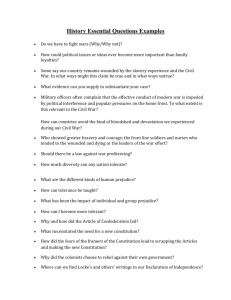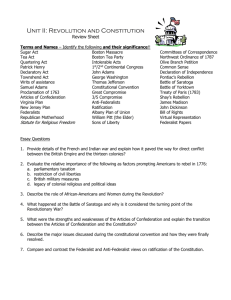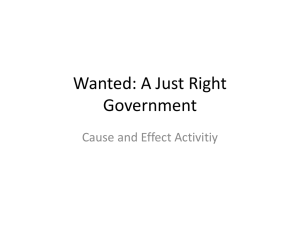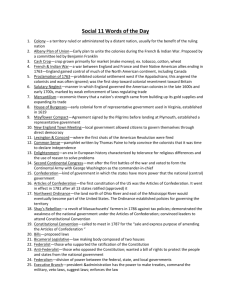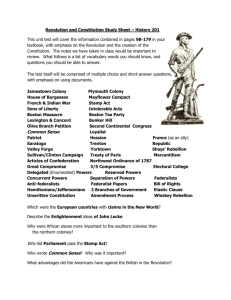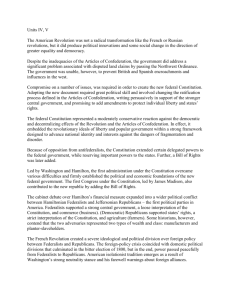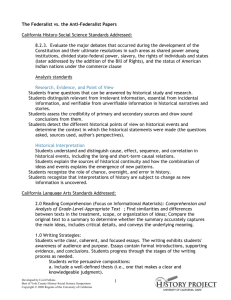Confederation, Constitution, and New Nation 15
advertisement
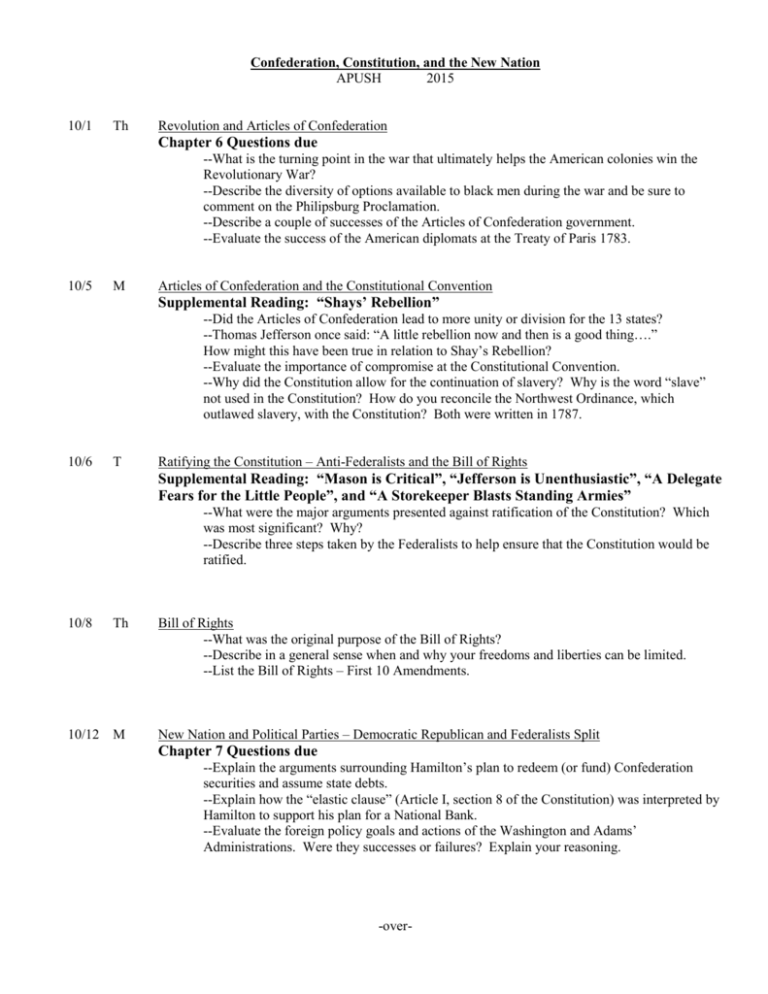
Confederation, Constitution, and the New Nation APUSH 2015 10/1 Th Revolution and Articles of Confederation Chapter 6 Questions due --What is the turning point in the war that ultimately helps the American colonies win the Revolutionary War? --Describe the diversity of options available to black men during the war and be sure to comment on the Philipsburg Proclamation. --Describe a couple of successes of the Articles of Confederation government. --Evaluate the success of the American diplomats at the Treaty of Paris 1783. 10/5 M Articles of Confederation and the Constitutional Convention Supplemental Reading: “Shays’ Rebellion” --Did the Articles of Confederation lead to more unity or division for the 13 states? --Thomas Jefferson once said: “A little rebellion now and then is a good thing….” How might this have been true in relation to Shay’s Rebellion? --Evaluate the importance of compromise at the Constitutional Convention. --Why did the Constitution allow for the continuation of slavery? Why is the word “slave” not used in the Constitution? How do you reconcile the Northwest Ordinance, which outlawed slavery, with the Constitution? Both were written in 1787. 10/6 T Ratifying the Constitution – Anti-Federalists and the Bill of Rights Supplemental Reading: “Mason is Critical”, “Jefferson is Unenthusiastic”, “A Delegate Fears for the Little People”, and “A Storekeeper Blasts Standing Armies” --What were the major arguments presented against ratification of the Constitution? Which was most significant? Why? --Describe three steps taken by the Federalists to help ensure that the Constitution would be ratified. 10/8 Th 10/12 M Bill of Rights --What was the original purpose of the Bill of Rights? --Describe in a general sense when and why your freedoms and liberties can be limited. --List the Bill of Rights – First 10 Amendments. New Nation and Political Parties – Democratic Republican and Federalists Split Chapter 7 Questions due --Explain the arguments surrounding Hamilton’s plan to redeem (or fund) Confederation securities and assume state debts. --Explain how the “elastic clause” (Article I, section 8 of the Constitution) was interpreted by Hamilton to support his plan for a National Bank. --Evaluate the foreign policy goals and actions of the Washington and Adams’ Administrations. Were they successes or failures? Explain your reasoning. -over- 10/13 T Jefferson, Madison, and the War of 1812 --What was the intended purpose of the Alien and Sedition Acts? How well did they achieve that purpose? --What do you think was the most significant action of Jefferson’s Presidency? --Why do historians think the decisions of the Marshall Court constitute a Federalist legacy? 10/15 Th The Era of Good Feeling Chapter 8 and 9 Questions due --Explain how government involvement in the economy had both good and bad consequences. --Explain how the growth of manufacturing lead to changes in the environment. --Discuss changes in family life, marriage, and raising children that arose in the early 1800s. --Concerning the following issues, evaluate the progress made during the early 1800s: race relations and slavery, religious freedom, worker’s rights, temperance, and immigration. 10/19 M Unit Test Multiple Choice Test on Revolution, Constitution, and New Nation (chapters 6-9) 10/20 T Jackson’s President and the Era of the Common Man Chapter 10 Questions due
